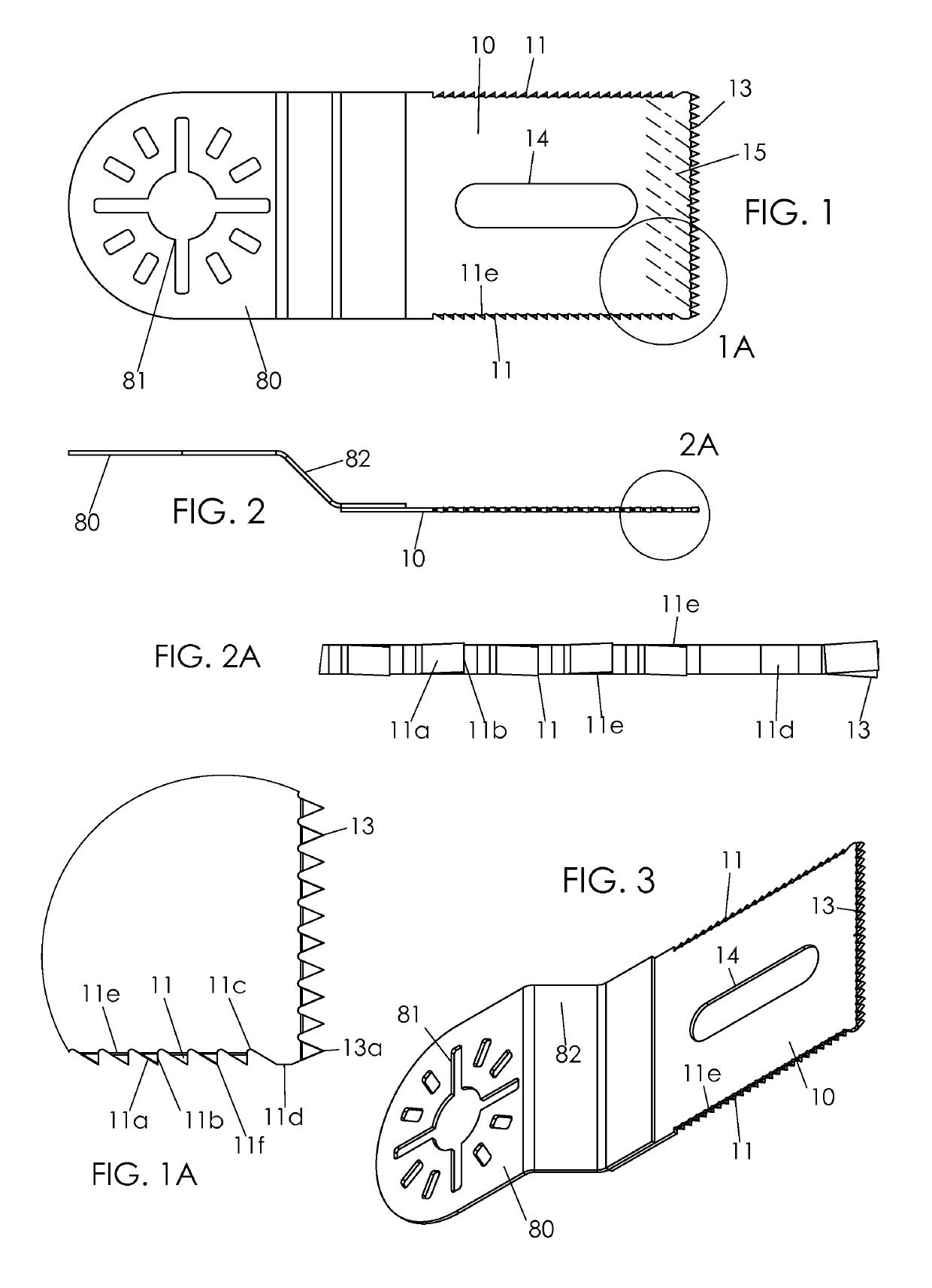Cutting blade for oscillating tool
a cutting blade and oscillating technology, applied in the direction of power driven reciprocating saws, metal working devices, manufacturing tools, etc., can solve the problem of not being functionally wider than the front end
- Summary
- Abstract
- Description
- Claims
- Application Information
AI Technical Summary
Benefits of technology
Problems solved by technology
Method used
Image
Examples
Embodiment Construction
[0018]FIGS. 1 to 3 show an oscillating tool blade according to a preferred embodiment of the invention. Rear mount 80 is at a rear length of the tool blade. Mount 80 includes openings 81 or equivalent structures to fit upon an oscillating power tool head. These features are often configured to fit multiple brands of such tools. The power tool, not shown, is typically hand held and provides an oscillating motion to the blade, rotating about the circular opening of 81 and thereby up and down at the right front end in FIG. 1. Segment 82 often is angled to hold the working element 10 out of plane from the rear mount and may be considered a portion of the rear mount. A solution is desired for practical blind plunge cuts with an oscillating tool that provides reduced stress and a slot widening ability.
[0019]Cutting teeth 13 are typically cut into the distal end of working end or front element 10 as shown. As best seen in FIG. 2, mounting end 81 and working end 10 are joined at a two layer...
PUM
 Login to View More
Login to View More Abstract
Description
Claims
Application Information
 Login to View More
Login to View More - R&D
- Intellectual Property
- Life Sciences
- Materials
- Tech Scout
- Unparalleled Data Quality
- Higher Quality Content
- 60% Fewer Hallucinations
Browse by: Latest US Patents, China's latest patents, Technical Efficacy Thesaurus, Application Domain, Technology Topic, Popular Technical Reports.
© 2025 PatSnap. All rights reserved.Legal|Privacy policy|Modern Slavery Act Transparency Statement|Sitemap|About US| Contact US: help@patsnap.com


